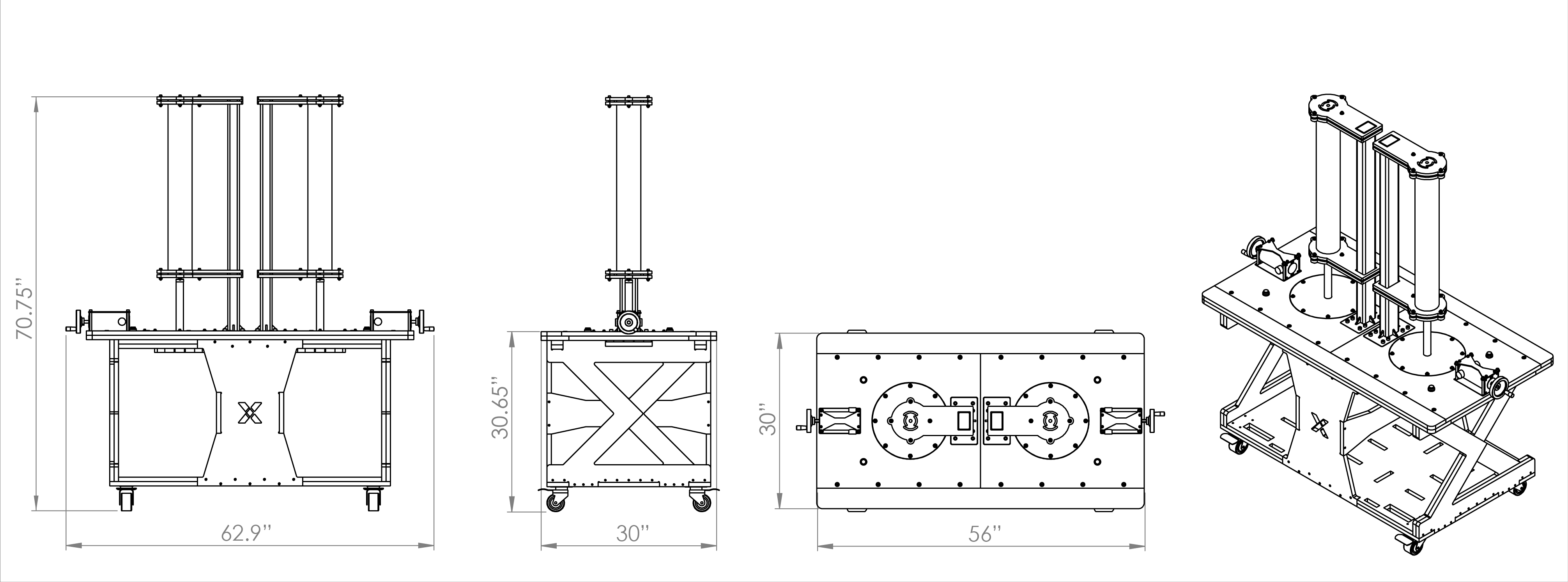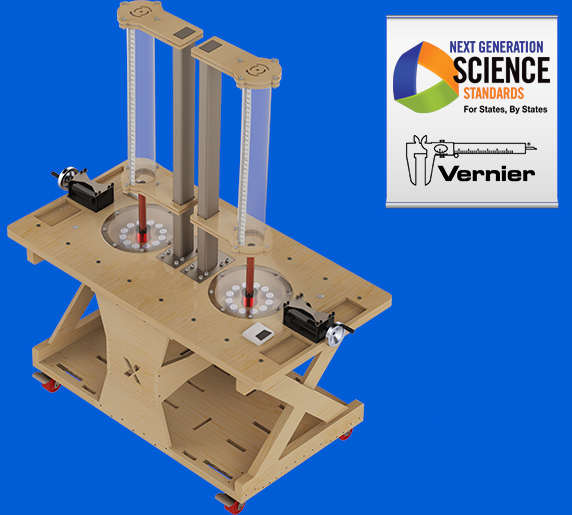STEM Concepts Learned from use of the Electromagnetic Ring Launcher FLEXCART: Grade Bands 3-5
Electricity and Magnetism as Interrelated Concepts:
Students are introduced to the idea that electricity and magnetism are interrelated and that an electrical current can create a magnetic field.
Magnetism and Force:
Students will learn about magnetism, attraction and repulsion, and how invisible magnetic forces can move physical objects.
Models:
Students will use the Electromagnetic Ring Launcher FLEXCART, a form of exhibit technology, to explore the phenomena of electromagnetism. Students will also use data and observations to evaluate the effectiveness of the model.
Variables:
Students will be able to manipulate variables and observe the results on the movement of the rings.
Engineering Principles:
Students will design, build, and test their own electromagnets to meet the needs of a specific challenge.
Math Calculations:
Students will calculate the potential energy of the different rings on the Electromagnetic Ring Launcher FLEXCART.
Computer Science:
Students will become familiar with how electromagnets are controlled by computer programming in order to propel a Maglev train down the track.
Vernier Technology:
The use of theVernier Go Direct® Current Probe and Graphical Analysis™️ 4 allow students to collect, analyze and interpret real-time scientific data from their Electromagnetic Ring Launcher investigation. The Current Probe can be purchased separately at Vernier.com and is accompanied by Graphical Analysis™️ 4 as a free download with the purchase of any probe or sensor.
STEM Careers associated with the Electromagnetic Ring Launcher Unit Plan:
- Electromagnetic Compatibility
(EMC) Engineer
- Radio Frequency Engineer
- Calibration and Instrumentation
Software Engineer
- Electromagnetic Actuator
Designer
- Linear Motor Designer
- Field Lab Tech/Engineer
- Electrical Engineer
- HVAC Instructor/Engineer
- Research Engineer
- Physicist
- Patent Engineer
Electromagnetic Ring Launcher FLEXCART Specs:


